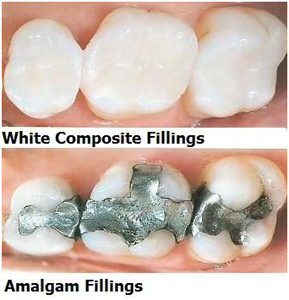Overview
A filling is used to treat a small hole, or cavity, in a tooth. To repair a cavity, a dentist removes the decayed tooth tissue and then fills the space with a filling material.
Causes
Tooth decay is damage to a tooth that can happen when harmful bacteria in your mouth make acids that attack the outer layer of the tooth called enamel. This can lead to a small hole in a tooth, called a cavity. More severe decay can cause a large hole or even destruction of the entire tooth. If tooth decay is not treated, it can cause pain, infection, and even tooth loss.
When a tooth is exposed to acid frequently—for example, if you eat or drink often, especially foods or drinks containing sugar and starches—the repeated cycles of acid attacks cause the enamel to continue to lose minerals. A white spot may appear where minerals have been lost. This is a sign of early decay.
Tooth decay can be stopped or reversed at this point. Enamel can repair itself by using minerals from saliva and fluoride from toothpaste or other sources. But if the tooth decay process continues, more minerals are lost. Over time, the enamel is weakened and destroyed, forming a cavity.
Treatment
There are several types of filling material currently available to repair cavities, including tooth- colored (composite) fillings and silver-colored (amalgam) fillings. Composite resin materials are increasingly used to fill teeth because many people prefer tooth-colored fillings and because composites continue to improve.
There are also treatments called crowns, used to repair badly broken-down teeth. Crowns can be made of Ceramic (tooth colored), gold or other metals like stainless steel (usually used on baby teeth). Ceramic is the most common material because of good strength and aesthetics.
Generally, dental fillings and crowns do not last a lifetime.




